Brazing is a process used to join metal parts by melting a filler material (the brazing rod) that has a lower melting point than the base metals. Unlike welding, brazing is often used for creating strong joints without melting the base material, making it ideal for steel components in various industries like automotive, construction, and manufacturing. The choice of brazing rod is critical when working with steel because it directly affects the strength, durability, and performance of the joint.
Selecting the right brazing rod for steel is essential to ensure the bond remains solid and reliable, especially in high-stress environments. Whether you’re dealing with stainless steel, mild steel, or alloy steel, finding the right rod will enhance the welding quality and prevent weaknesses in the joint. With the right brazing rod, your project can be completed faster, more efficiently, and with long-lasting results.
In this blog, we will review some of the best brazing rods available for steel, providing detailed information on their features, specifications, pros and cons, and how they perform under various conditions. These rods—each with its unique qualities—are carefully selected to meet the needs of both professionals and hobbyists who work with steel.
1. 40 Sticks Copper Brazing Rods
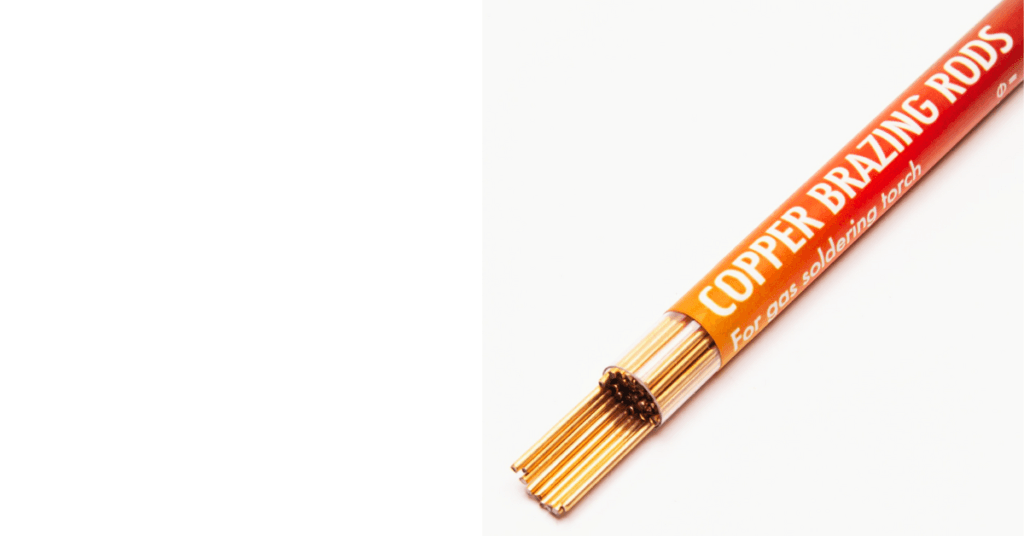
Overview:
The 40 Sticks Copper Brazing Rods are made from high-quality copper, a popular choice for general-purpose brazing. Copper rods provide excellent thermal conductivity and are cost-effective, making them ideal for brazing steel parts that require heat resistance. These rods are particularly useful for projects where speed and efficiency matter, without compromising on joint strength.
Specifications:
- Length: 18 inches
- Diameter: 1/8 inch (3.2 mm)
- Material Composition: 100% copper
- Melting Point: 1,984°F (1,085°C)
How it Works for Steel:
Copper brazing rods are suitable for low to medium-strength steel applications. They work well for sealing gaps, repairing cracks, and joining steel parts in both industrial and domestic environments. The high thermal conductivity of copper makes it easy to heat the steel, and the rod melts quickly, providing strong and durable joints.
Pros:
- Excellent for general-purpose steel brazing.
- Cost-effective and readily available.
- Good thermal conductivity and joint strength.
Con:
- Not ideal for high-stress or high-temperature applications compared to silver-based rods.
2. 20 Sticks 5% Silver Solder Brazing Rods
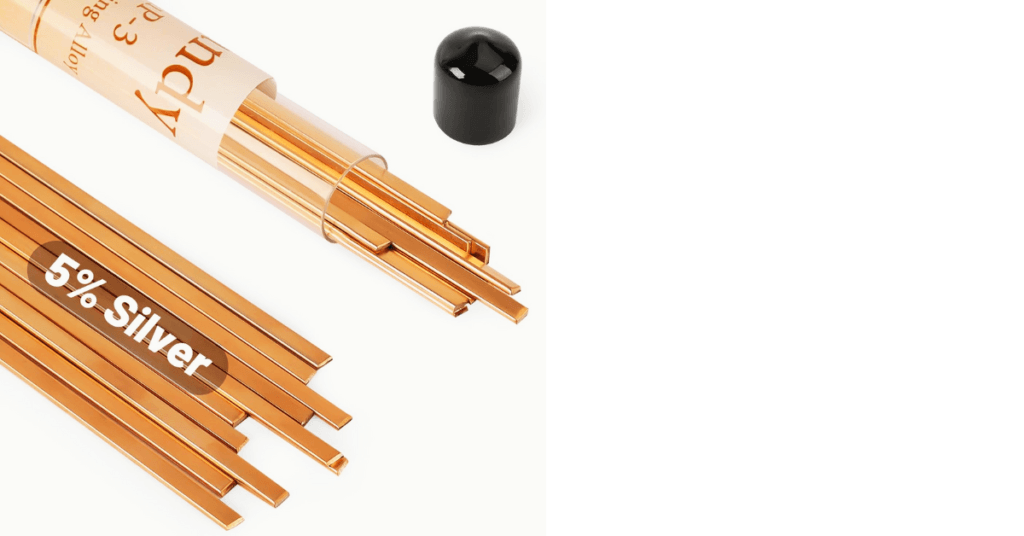
Overview:
The 20 Sticks 5% Silver Solder Brazing Rods offer a higher quality alternative to copper rods. The 5% silver content increases the rod’s strength, making it a great choice for steel applications requiring more durability and higher-temperature resistance. Silver solder rods provide excellent joint strength and are commonly used for repairing automotive components and steel machinery.
Specifications:
- Length: 18 inches
- Diameter: 1/8 inch (3.2 mm)
- Silver Content: 5%
- Melting Point: 1,472°F (800°C)
How it Works for Steel:
Silver solder brazing rods are perfect for brazing steel parts that will undergo medium to high temperatures. The 5% silver content adds additional strength and resistance to corrosion, which makes them ideal for steel parts exposed to harsh environments. These rods also flow smoothly, filling joints more effectively than copper rods.
Pros:
- Stronger than copper rods due to silver content.
- Lower melting point than pure silver rods, making it easier to work with.
- Corrosion-resistant and provides durable joints.
Con:
- More expensive compared to copper rods due to the silver content.
3. Silver Solder Copper Phosphor Brazing Welding Rods
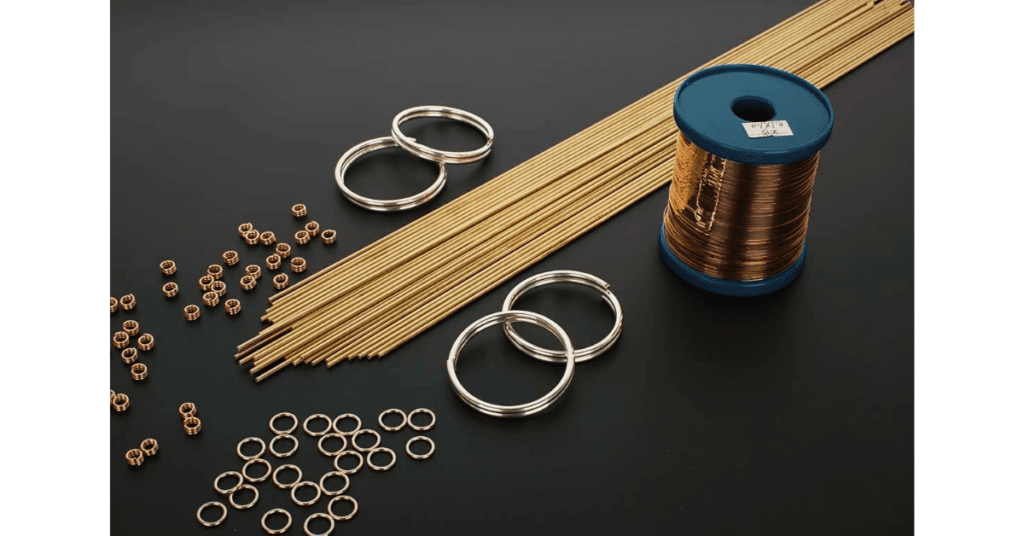
Overview:
Silver Solder Copper Phosphor Brazing Welding Rods combine the best of both worlds: the durability of silver and the strength of copper. These rods are specifically designed for brazing steel, offering great flow characteristics and resistance to oxidation and corrosion. The added phosphor helps the rod to work well with a range of metals, making it a versatile choice for brazing steel components.
Specifications:
- Length: 18 inches
- Diameter: 1/8 inch (3.2 mm)
- Material Composition: 15% silver, copper, and phosphor
- Melting Point: 1,430°F (777°C)
How it Works for Steel:
These rods are excellent for steel, especially in environments that require enhanced corrosion resistance. The phosphor in the rod helps it to bond well with steel, creating a strong and reliable joint. They are perfect for applications like refrigeration systems and automotive repairs where durability and resistance to extreme conditions are needed.
Pros:
- Ideal for steel parts with dissimilar metals.
- Good flow properties and reduced oxidation.
- Strong joint strength and resistance to corrosion.
Con:
- Slightly trickier to use for beginners due to the phosphor content.
4. Silver Phos Copper Sticks JAgP-15 Silver Phos Soldering Rods
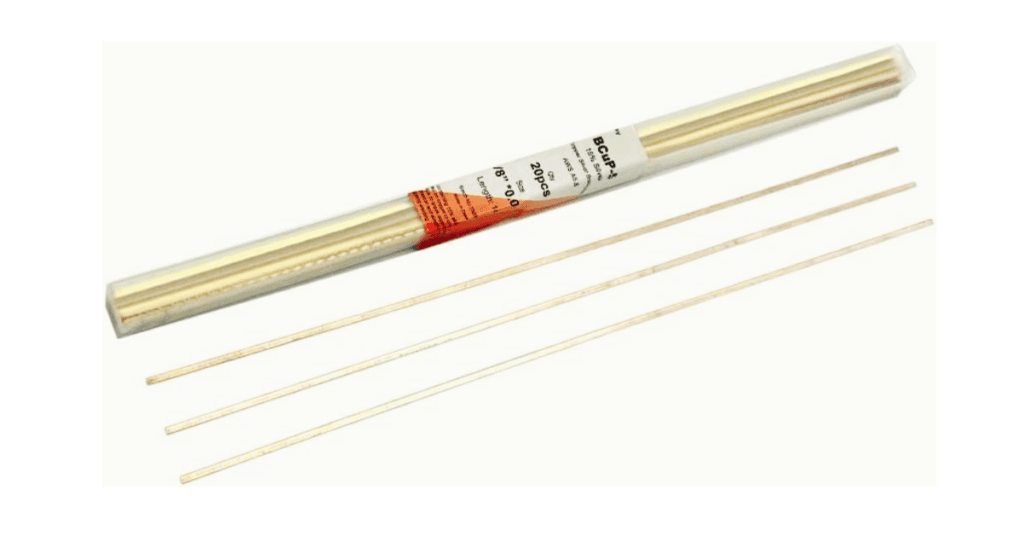
Overview:
The JAgP-15 Silver Phos Copper Sticks are specifically designed for steel brazing, especially in situations where a high-strength bond is required. The 15% silver content in this rod offers superior strength and joint integrity. It’s often used for welding and repairing steel in high-stress environments like construction and automotive industries.
Specifications:
- Length: 18 inches
- Diameter: 1/8 inch (3.2 mm)
- Silver Content: 15%
- Melting Point: 1,450°F (788°C)
How it Works for Steel:
These rods are highly effective in high-temperature environments, providing excellent bonding strength for steel. The silver content ensures that the joint maintains strength, while the phosphor makes the rod flow easily into joints. The JAgP-15 is ideal for applications requiring a combination of strength, thermal stability, and resistance to cracking.
Pros:
- Very high joint strength.
- Effective for steel and stainless steel.
- Resistant to cracking and high-stress situations.
Con:
- Requires careful heat control for best results.
5. BLUEFIRE 20 Sticks Brazing Rods BCuP-5 Copper Phosphor Alloys Welding Rods
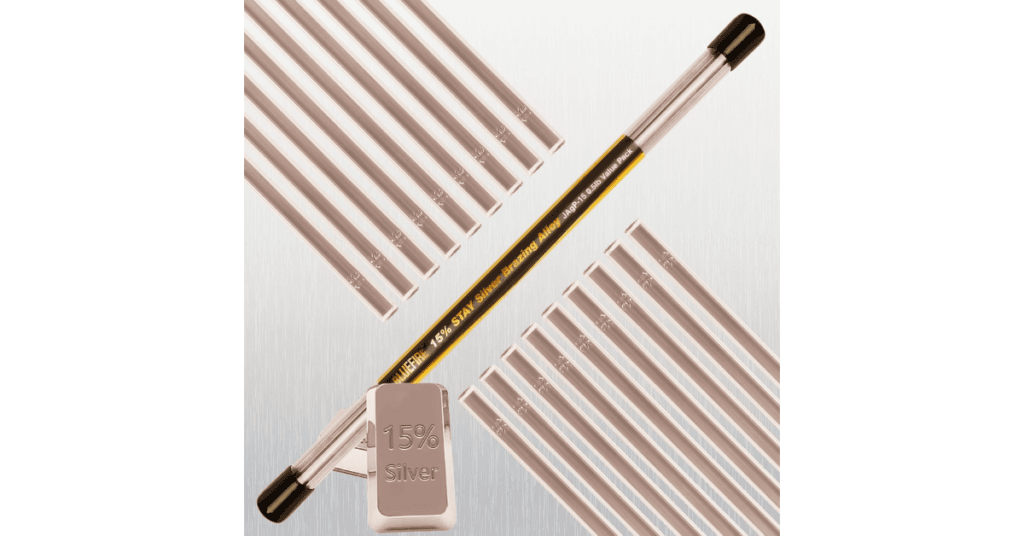
Overview:
The BCuP-5 Copper Phosphor Alloys Welding Rods are another excellent choice for brazing steel. With a high silver content (around 5%) and a copper-phosphor alloy composition, these rods are ideal for joining steel parts in high-stress, high-temperature conditions. BCuP-5 rods are often used in refrigeration, HVAC, and plumbing systems due to their superior strength and corrosion resistance.
Specifications:
- Length: 18 inches
- Diameter: 1/8 inch (3.2 mm)
- Copper Phosphor Alloy Composition: 5% silver, copper, and phosphor
- Melting Point: 1,425°F (774°C)
How it Works for Steel:
BCuP-5 rods are commonly used for brazing steel in high-heat applications, thanks to their ability to withstand elevated temperatures without cracking. The phosphor content aids in good flow properties, ensuring a solid, leak-free bond. These rods are perfect for industrial applications where strength and reliability are paramount.
Pros:
- Excellent for high-stress applications.
- Strong, durable joints with corrosion resistance.
- Ideal for brazing steel in harsh environments.
Con:
- Higher cost compared to copper-based rods.
Factors to Consider When Choosing a Brazing Rod for Steel
- Material Compatibility:
Brazing rods come in different materials, including copper, silver, and phosphor alloys. Copper rods are often used for general-purpose brazing, while silver rods provide superior strength and are ideal for high-temperature and high-stress applications. - Melting Point and Temperature Requirements:
Different rods have varying melting points, and selecting the right one depends on the type of steel you’re brazing. Silver rods, for example, melt at lower temperatures and are great for steel that requires less heat to form a joint. On the other hand, copper rods may require higher temperatures but can create strong, durable bonds. - Strength and Durability:
For heavy-duty steel applications, rods with higher silver content or phosphor alloys are recommended. These materials enhance joint strength, making them ideal for components exposed to extreme temperatures or mechanical stress. - Cost vs. Performance:
While copper rods are the most cost-effective, they may not be suitable for high-strength applications. Silver and phosphor alloy rods are more expensive but offer better performance and durability, making them worth the investment for critical applications. - Ease of Use:
Some brazing rods are easier to use than others. Copper rods are generally easier to work with, while silver and phosphor rods require more skill and precision. Consider your level of experience before choosing a rod. - Corrosion Resistance:
Steel components exposed to harsh environments, such as high humidity or salty air, require brazing rods that offer corrosion resistance. Phosphor and silver solder rods are designed to provide excellent resistance to oxidation, ensuring long-lasting results.
Types of Brazing Rods for Steel
- Copper-Based Brazing Rods:
These rods are typically used for general-purpose brazing and are effective for low- to medium-strength applications. Copper rods offer good thermal conductivity and are widely available at a lower price point. - Silver Brazing Rods:
Silver brazing rods offer superior joint strength and are ideal for high-strength applications. They are perfect for use in critical systems, such as HVAC or automotive, where durability is essential. - Phosphor-Copper Brazing Rods:
These rods offer a balance of ease of use and strength. The addition of phosphor helps improve the rod’s flow and bonding capabilities, making it a popular choice for steel brazing. - Aluminum-Silicon Brazing Rods:
Though primarily used for aluminum, these rods can occasionally be used for steel, especially for applications that require a lower melting point.
How to Braze with a Brazing Rod: Step-by-Step Guide
Step 1: Preparation of Steel Surface:
Clean the steel surface thoroughly by removing rust, grease, and debris using a wire brush or grinder.
Step 2: Choosing the Right Rod:
Select a brazing rod based on the type of steel and the conditions the brazed joint will endure.
Step 3: Setting Up the Equipment:
Prepare the torch, set the correct flame type, and apply flux to the steel surface to prevent oxidation during the process.
Step 4: Heating the Steel:
Heat the steel evenly until the rod melts, paying close attention to avoid overheating.
Step 5: Applying the Brazing Rod:
Feed the brazing rod into the joint, ensuring the rod flows smoothly into the gap.
Step 6: Cooling the Joint:
Allow the brazed joint to cool naturally. Don’t cool it too quickly, as this may cause cracking.
Step 7: Cleaning Up:
Remove any flux residues and inspect the joint for strength and smoothness.
Safety Tips and Precautions While Brazing
- Protective Gear:
Always wear flame-resistant clothing, gloves, and safety glasses to protect from heat and fumes. - Ventilation:
Make sure the area is well-ventilated to avoid inhaling harmful fumes released during brazing. - Proper Handling of Materials:
Be cautious when handling hot materials, including the brazing rods, which can cause burns if touched. - Check Equipment Regularly:
Inspect your torch and other equipment for leaks or malfunctions to prevent accidents during brazing.
FAQs
- What is the difference between brazing and welding?
Brazing uses a filler material with a lower melting point than the base metal, while welding melts both the base metal and filler material to form a strong bond. - Can I use the same brazing rod for all types of steel?
No, different types of steel may require specific brazing rods. Always select a rod that matches your steel’s properties. - How do I choose the right brazing rod for my project?
Consider factors like the type of steel, joint strength, temperature requirements, and ease of use when selecting a brazing rod. - What temperature do I need to braze steel?
Steel typically requires temperatures between 1,200°F and 1,500°F for effective brazing. - Is it possible to braze stainless steel?
Yes, with the right brazing rod, such as a silver-based rod, you can braze stainless steel effectively. - Can brazing rods be used on other metals?
Yes, many brazing rods can be used for materials like brass, copper, and aluminum. - How long does it take to braze steel?
The time required varies, but brazing typically takes only a few minutes for most joints. - What flux should I use with brazing rods?
The type of flux depends on the rod material, but most general-purpose fluxes will work with copper or silver brazing rods. - Can brazing rods be reused?
No, brazing rods are designed for single-use only and should not be reused. - What happens if the brazing rod doesn’t melt properly?
If the rod doesn’t melt, check the flame temperature or make sure the joint is properly prepared. You may also be using the wrong rod for the material.
